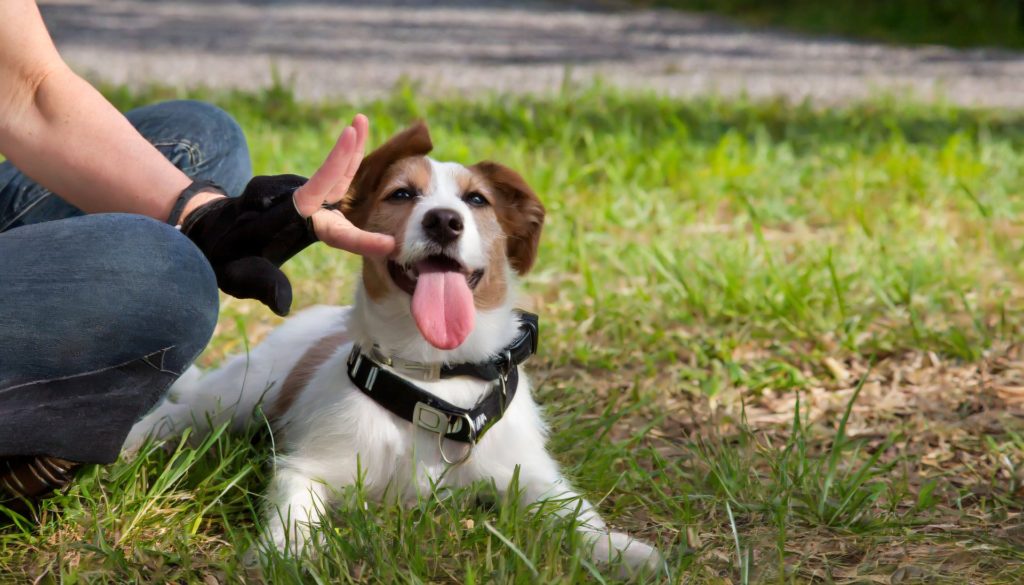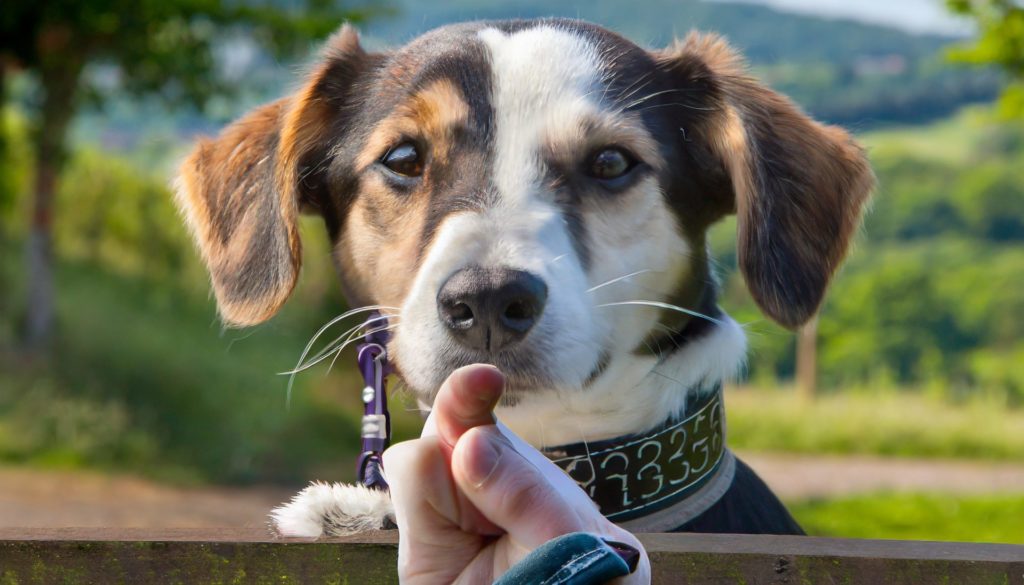
A Comprehensive Guide to Teaching Your Dog Basic Sign Language Commands!
In the realm of dog training, traditional verbal commands have long been the norm. However, incorporating sign language into your training routine can offer a unique and effective way to communicate with your furry friend. This guide will walk you through the process of teaching your dog basic sign language commands, fostering a deeper connection and enhancing their overall obedience.
Understanding the Basics of Sign Language Gestures for Dogs:
- Familiarize yourself with basic sign language gestures for dogs that are clear and distinct.
- Choose signs that are easy for you to remember and perform consistently.
Start with Essential Sign Language Commands:
- Begin with fundamental commands like “sit,” “stay,” and “come.”
- Use treats and positive reinforcement to associate the signs with specific actions.

Here are 10 Basic Signs for teaching your dog basic commands using Sign Language:
- Sit: Gesture: With an open hand, palm facing up, raise your hand upward. This mimics the action of a dog sitting.
- Stay: Gesture: Extend your arm with an open palm in front of you, signaling the dog to halt or stay in place.
- Come: Gesture: Bring your hand toward your chest with fingers curled in, inviting the dog to approach you.
- Lie Down: Gesture: Point your hand downward with an open palm, moving it toward the ground, signaling the dog to lie down.
- Stand: Gesture: Hold your hand vertically, palm facing forward, and move it upward, signaling the dog to stand on all fours.
- Wait/Stay: Gesture: Extend your arm with the palm facing the dog, signaling them to wait in their current position.
- Good/Well Done: Gesture: A simple thumbs-up or a pat on the head reinforces positive behavior.
- No/Stop: Gesture: Extend your hand with the palm facing the dog and move it back and forth, signaling them to stop or cease a particular action.
- Quiet: Gesture: Place your index finger vertically in front of your lips, signaling the dog to be quiet or stop barking.
- Paw/Shake Hands: Gesture: Extend your hand toward the dog’s paw, mimicking a handshake. This is often used for the “paw” or “shake hands” command.
Consistency is Key to Successful Dog Sign Language Training:
- Dogs thrive on routine, so be consistent with your signs and rewards.
- Practice commands in various environments to reinforce their understanding.
Patience and Positive Reinforcement:
- Dogs respond well to positive reinforcement, so celebrate their successes with treats, praise, and affection.
- Avoid punishment-based training and instead redirect undesired behavior.
Gradual Progression:
- As your dog becomes proficient in basic commands, gradually introduce more advanced signs.
- Be patient and don’t overwhelm your dog with too many new commands at once.

Here are 10 more signs for teaching your dog basic commands using sign language:
- Fetch: Gesture: Point your index finger forward, indicating the direction for the dog to retrieve an object.
- Drop It/Release: Gesture: Open your hand and lower it, signaling the dog to release an item from their mouth.
- High Five: Gesture: Raise your hand, palm open, and offer it to the dog for a “high five.”
- Spin/Turn Around: Gesture: Use a circular motion with your hand, encouraging the dog to spin or turn around.
- Roll Over: Gesture: Sweep your hand in a circular motion over the dog, signaling them to roll over.
- Leave It: Gesture: Point to the ground with an open hand, signaling the dog to leave or ignore an object.
- Back Up: Gesture: Extend both arms toward the dog, signaling them to move backward away from you.
- Hug: Gesture: Wrap your arms around your chest, mimicking a hug, and encourage the dog to come close for affection.
- Beg/Sit Pretty: Gesture: Hold a treat above the dog’s head, encouraging them to sit on their hind legs and “beg.”
- Bow: Gesture: Lower your hand in front of the dog, signaling them to lower the front part of their body into a bowing position.
Incorporate Hand Signals with Verbal Cues:
- For a seamless transition, pair each sign with a corresponding verbal command.
- This dual approach strengthens your dog’s comprehension and responsiveness.
Practice Sign Language Training with Your Dog Regularly:
- Regular training sessions, even short ones, help reinforce learning and maintain a strong bond.
- Consistent practice also prevents regression in their obedience.
Customize Sign Language Commands to Suit Your Dog:
- Every dog is unique, so adapt your signs to match your dog’s abilities and personality.
- Pay attention to their body language and adjust your signs accordingly.
Utilize Professional Sign Language Resources:
- Consider enrolling in a dog training class or consulting a professional dog trainer for guidance.
- Online tutorials and books can also provide valuable insights into effective sign language training.
Celebrate Sign Language Achievements with Your Dog:

- Celebrate milestones and achievements in your dog’s training journey.
- A well-trained dog not only follows commands but also enjoys a happier and healthier life.
Integrating sign language into your dog’s training routine can be a rewarding experience for both you and your furry companion.
By following this comprehensive guide and embracing a patient and positive approach, you’ll not only enhance your dog’s obedience but also strengthen the unique bond you share.
Remember, effective communication is the key to a happy and well-behaved canine companion.





